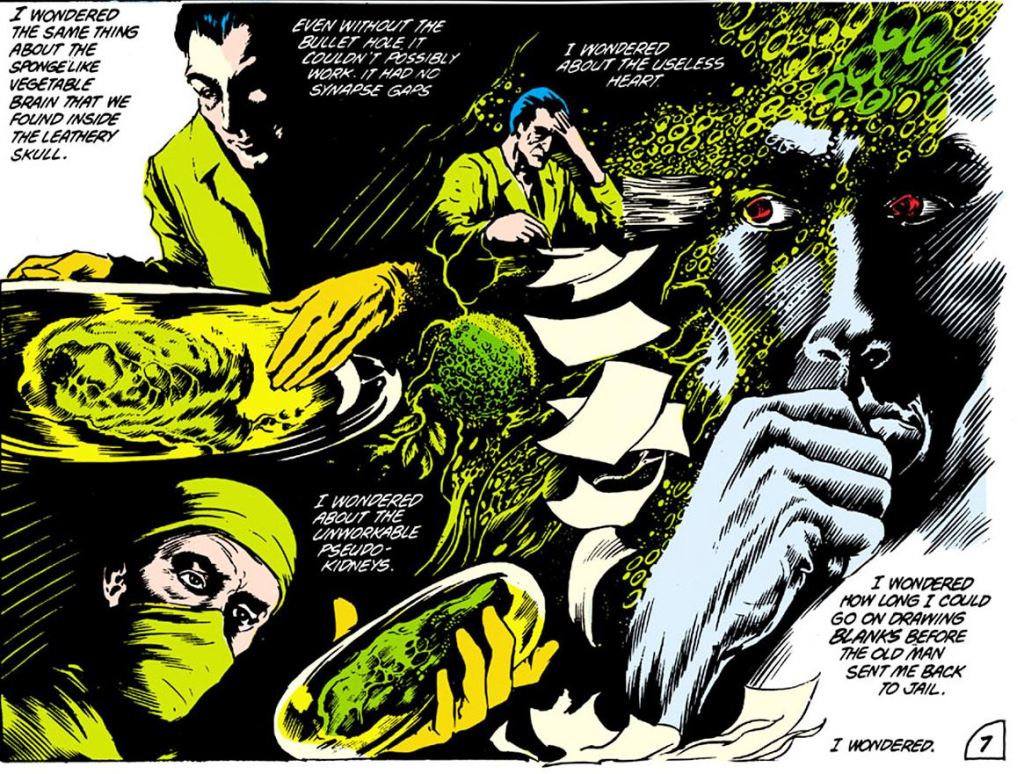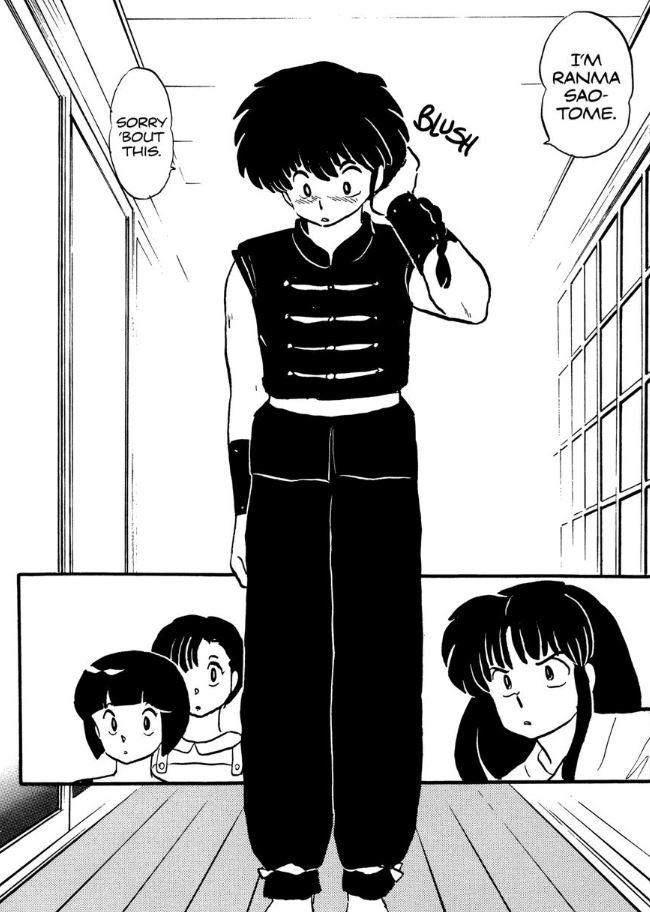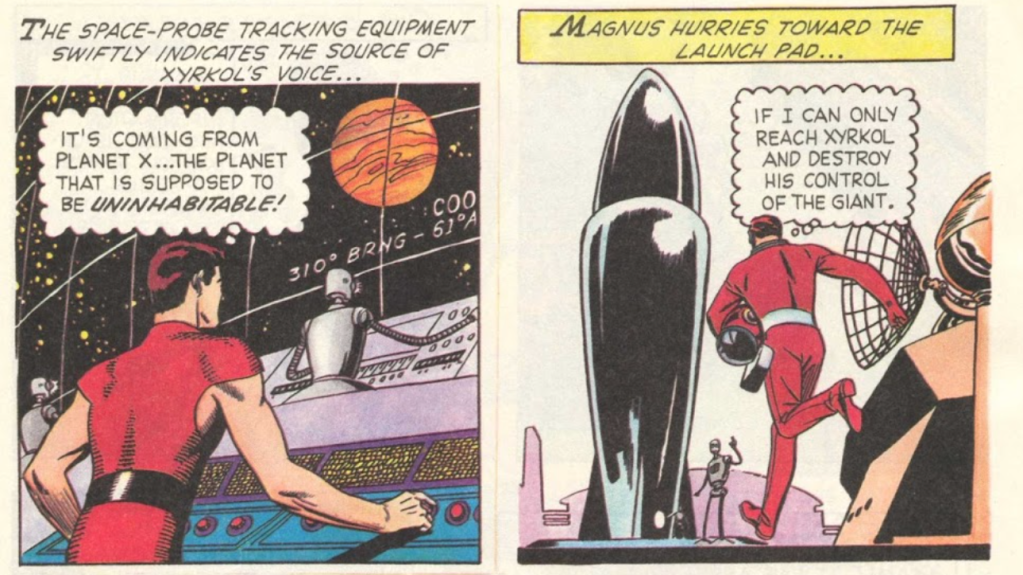|
|
Post by Slam_Bradley on Jul 8, 2022 14:56:57 GMT -5
I'm beginning to question the premise that you need 1600 of anything. It's useful to have that many dollars. Or more. |
|
|
|
Post by spoon on Jul 8, 2022 19:47:11 GMT -5
FYI- There was a book called Slings And Arrows Comic Guide, last published in 2003, that I once owned that I relied on for good advice on essential issues. Long out of print, Amazon has some used copies available Edited by Frank Plowright, the Slings and Arrows comic Guide is the most comprehensive review of comics ever published. Sixteen reviewers offer informed commentary on over 5300 titles from the 1930s to the present day giving an overview of each series along with recommended issues. The 800 pages also include over 5000 creators listed in the index, and a color section offering recommendations in a variety of genres. Also included are short essays about the reviewers' favorite comics ever.  I have this, but in an earlier edition, with a Frank Quitely cover but no color section. It's a good resource in that it's so comprehensive. Just browsing you may learn about titles you never knew existed or when certain changes happened in a series. The downside that at times it can be very . . . British . . . in the worst sense of the word. Imagine you're singing along to a song you love or bobbing your head. The reviewers of Slings & Arrows are the condescending music journalists who will call the song you love unsophisticated dreck. For example, the review of Batman and the Outsiders/Adventures of the Outsiders is pretty dismissive of the series (albeit with one compliment thrown in there). It's a fun series that I really enjoy, but from this review, you'd think you should ignore it. And it's not just that the reviewers are too smart and sophisticated. I feel like they're may be a failure to get their facts straight on stuff they don't like. Reviewer Jennifer Cole says after Batman left BATO, it lasts less than a year, showing he was the only thing that kept the series going. First, that's a basic arithmetic failure, because it lasts more than a year after it becomes Adventures. Second, it's a failure of basic research, because she doesn't seem to realize that the series published a year of new stories and then went to reprints of the Baxter series. Now, it did peter out eventually, as the new series only lasted until #28, but AOA was cancelled because like all of the newsprint versions that reprinted the Baxter series, it seemed the reprints weren't sustainable. |
|
|
|
Post by badwolf on Jul 8, 2022 20:08:07 GMT -5
The database software I used to track my collection, ComicBase, uses a lot of title descriptions from S&A. They hate everything!
|
|
|
|
Post by codystarbuck on Jul 8, 2022 20:33:01 GMT -5
The database software I used to track my collection, ComicBase, uses a lot of title descriptions from S&A. They hate everything! They should try Life Cereal; maybe it would improve their outlook. |
|
|
|
Post by Deleted on Jul 8, 2022 20:34:30 GMT -5
The database software I used to track my collection, ComicBase, uses a lot of title descriptions from S&A. They hate everything! They should try Life Cereal; maybe it would improve their outlook. Sounds like about 90% of all fandoms these days or any fan commenting on comics or any other geek culture property on the internet on any given day (especially things not released yet or they haven't read or seen themselves). -M |
|
|
|
Post by spoon on Jul 8, 2022 21:17:32 GMT -5
The database software I used to track my collection, ComicBase, uses a lot of title descriptions from S&A. They hate everything! I recall a movie reviewer (maybe Siskel) writing that he can tell you whether or not he liked a movie, but a good review should give the reader a sense of the movie to determine whether or not they'll probably like it. The edition of S&A I own has room for improvement on that metric. |
|
|
|
Post by mistermets on Jul 9, 2022 12:20:18 GMT -5
Swamp Thing #20
This is not included in my TPB of Alan Moore's Swamp Thing run, although it is included in some recent collections. This is more of a bridge issue between the two runs, as Moore ties up some loose ends and sets up some big reveals, to the extent that it's very easy to think his run began next issue with the Anatomy lesson. There's a good hook here that while the big bad had been defeated at the tail end of Mike Pasko's run and this issue confirms it, other forces decide to go after the weakened Swamp Thing. Obviously this run becomes much bigger under Moore, but at this point he's a completely unknown British writer taking over a book featuring a character who had just been in a movie. At this point, he had a lot to prove just to keep his current audience, and I'd have to think they were on board here. Artist Dan Day doesn't come back during the Moore run, but he's working with inker John Totlebon and colorist Tatjana Wood, so the style is consistent with what comes next and what the book had evolved into. One theme here is men expecting women to fall in love with them just because they were in extreme danger together, so Moore is already looking at a new understanding of typical comic book behavior. We see hints of a later story. It works by itself, but I wonder if it also helps make the big reveals next issue seem more shocking, because so far it seems business as usual. The story is interesting and tragic, with danger to some of the supporting characters, but it seems like this is going to be a bad guy the Swamp Thing's going to have to fight soon enough. With that in mind, the reader may easily think the military's trap for Swamp Thing is no big deal. Until we see just how effective it is. Grade: A (Mainly because I know it gets better) Comics Read So Far From the List: 19/1600
|
|
|
|
Post by mistermets on Jul 10, 2022 10:04:27 GMT -5
Saga of the Swamp Thing #21 "The Anatomy Lesson"The second issue is the highlight of the run. It works pretty well as a standalone comic, and as the beginning of a new arc. It starts as a D-list villain is brought in to advise people who think they have killed the Swamp Thing, and just want to figure out how to make money from him. There's a very matter of fact way to how the villains operate. One guy is rich and connected; he doesn't think he needs to understand everything immediately in order to make a fortune. The other guy wants to stay out of jail, but he's able to make a crucial connection. The regular supporting characters disappear for this issue, which makes it more effective as one-off (although obviously it's excellent as part of a larger run.)  This reads like a horror story, and it's a damn good one. I don't know the extent to which this is typical of the early run by Paska and company, or the original run by Wein and Wrightson. I should definitely check out the latter. Steve Bissett and John Totlebon's art has the right mood for a story about an unsettling discovery at night. This is not the last time Moore has an autopsy in a major comic book scene, but it is quite effective as an excuse for exposition. And it leads to the big discovery, one of the most significant retcons to any DC character, something that changes not just the Swamp Thing, but sets in motion new story engines for other series as well. But if all you want to read is this one issue, you're still going to have a good time. Grade: A+ Comics Read So Far From the List: 20/1600
|
|
|
|
Post by mistermets on Jul 13, 2022 13:20:17 GMT -5
Saga of the Swamp Thing #22-24
I'm going to look at these three issues as a discrete unit. The Floronic Man decides that he is going ot wipe out all animal life to protect the plants. Swamp Thing tries to process last issue's realization that he is not a human being, but some kind of plant consciousness that absorbed something from a human being, and they're not sure what that is. Abby's trying to help and not sure what to do. This is a story that remains creepy even if in a firmly DC world. Up until this point, Jason Woodrue the Floronic Man had been a minor bad guy. But he's the perfect menace here. His callousness distinguishes him, his mental break builds on both his character and his decision to experience something extraordinary, and he just has some really creepy scenes. Moore's run on Swamp Thing is largely a romance between the Swamp Thing and Abigail. And it's set up nicely here. She's a supporting character in this title, so she's been through some stuff, but she's still going to try to do the right thing. She's the one who reminds me him that even if he's learned that things he took for granted just aren't so, there's still much to live for. When there's a threat to life on Earth, the Justice League get involved, but there's a poetic take on the DC icons here. We see that this is an extinction-level threat that they're not necessarily equipped for. The resolution to the story is powerful, and the Justice League's role is excellent, as they're mainly dealing with the clean-up. This element of shared continuity is a bit controversial, as some readers don't like the idea that a story in the DC Universe should consider questions like Superman doesn't just save the day. But we do get a good answer here. Grade: A+ Swamp Thing #25-27
This three parter might not get the attention of the big stories (the original arc, the debut of Constantine, the consummation, the parliament of the green, etc.) of the run, but it is really noteworthy. If the first volume was mainly about Swamp Thing learning new things about himself, this is about what makes Abigail. And it is also one of the most unsettling stories of any horror comic I've ever read. Abigail gets a new job working with autistic children. One children in particular is scared of a monster called the Monkey King. This gets to one of Alan Moore's skills, as things that seem a bit silly; an obsession with spelling, visions of a swordfish accident suddenly have powerful payoff. The monster itself is just creepy. This is probably the best version I've seen of an old trope of fears coming alive, just because of what we see, in terms of what it reveals about character (Swamp Thing has a very reasonable fear), what it hints at (there are clues about what Abigail's afraid of that hint at a life outside of this comic book series) and how it can make us care for characters just introduced for the sake of this one story.  Meanwhile, weird stuff is going on with Abigail's husband, which is one of the most effective subplots I've seen (hmm, noticing a trend of this run featuring pinnacles of a type of story) in serialized horror. Etrigan the Demon guest-starrs, although his willingness to take innocent lives to stop a monster complicates things. It also crystalizes a big part of what this run of Swamp Thing is about, as we have an unflinching (as far as DC superhero comics go) look at what's bad in the world, but it won't stop the people who are well aware of this from risking everything to try to make it better. Grade: A+ Volume One Grade: A+/ It's easily on of the 50 best comic book trade paperbacks I've ever read. Comics Read So Far From the List: 26/1600
|
|
|
|
Post by chaykinstevens on Jul 13, 2022 13:42:07 GMT -5
Saga of the Swamp Thing #22-24Swamp Thing #25-27Comics Read So Far From the List: 20/1600 Shouldn't that be 26/1600? |
|
|
|
Post by mistermets on Jul 18, 2022 20:05:42 GMT -5
Some more... Ranma 1/2 Volume 1 #1-7 This manga had a great concept, although it's probably troublesome now. A teenage karate master is cursed to turn into a girl every time he is exposed to cold water (hot water turns him back.) I haven't read it in years, but it's a fun high school action comedy. I recall later stories being better, although it is a manga notorious for a lack of character growth, and there are more developments in the early chapters. Detective Comics #327-328These two issues seem to represent when Batman (and Elongated Man) hit the Silver Age. They're fun, playing around with expectations like when Elongated Man goes to a new city and no one knows who he is, or hoodlums all recall how Batman and Robin put them and their pals in jail. It marks an evolution from the Golden Age Batman without the ridiculousness of what Silver Age Batman is known for. Magnus Robot Fighter #1-3 The versions I read were reprinted by Valiant as Original Magnus, Robot Fighter and Vintage Magnus, Robot Fighter and if you see these in dollar bins, I highly recommend it. Russ Mannings' vision of the future is lovely, and the recoloring is excellent. These are accessible, clean sci-fi adventure stories, following a guy who is kind of a superhero of the 40th century in a world where humans are overly reliant on robots and some of them are doing bad things. There may be diminishing returns later (I may very well be wrong about that), but I'm glad I sampled this. Comics Read So Far From the List: 38/1600 |
|